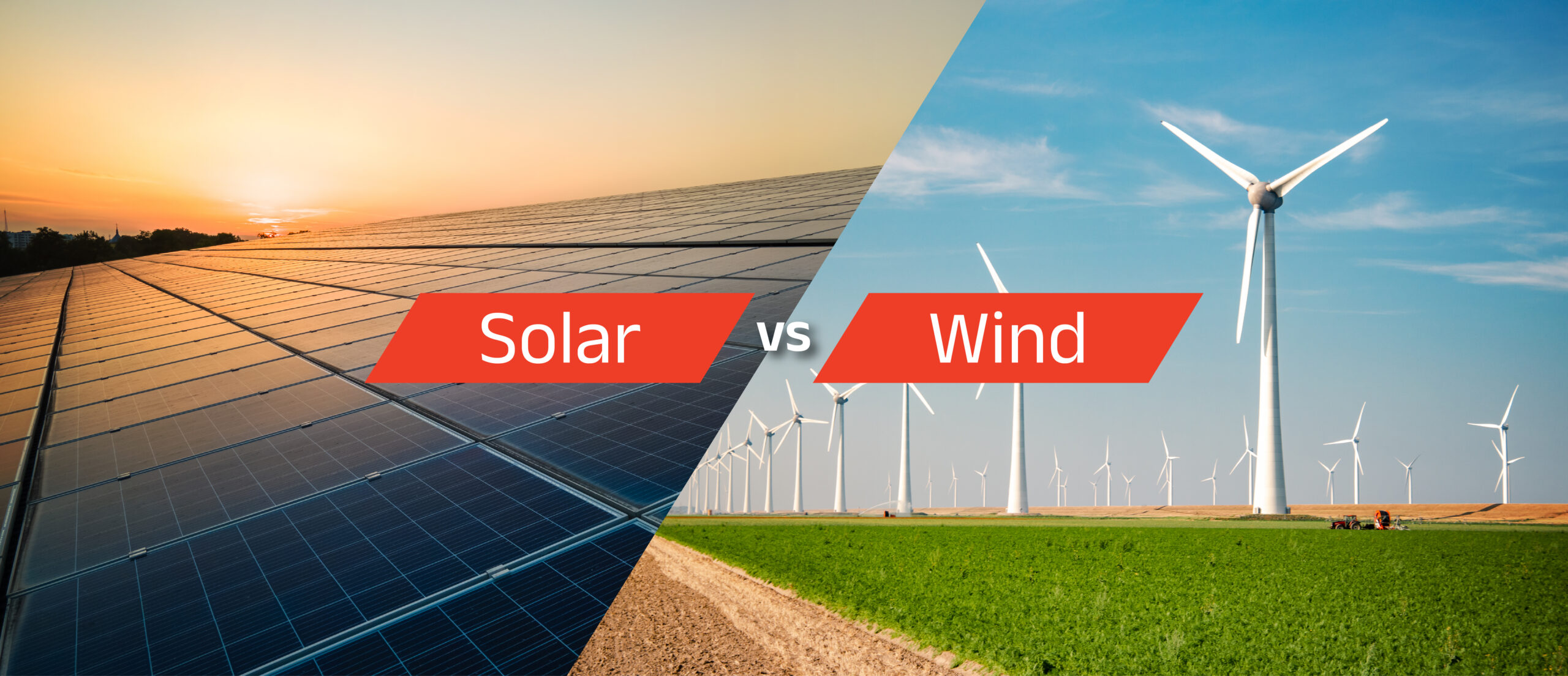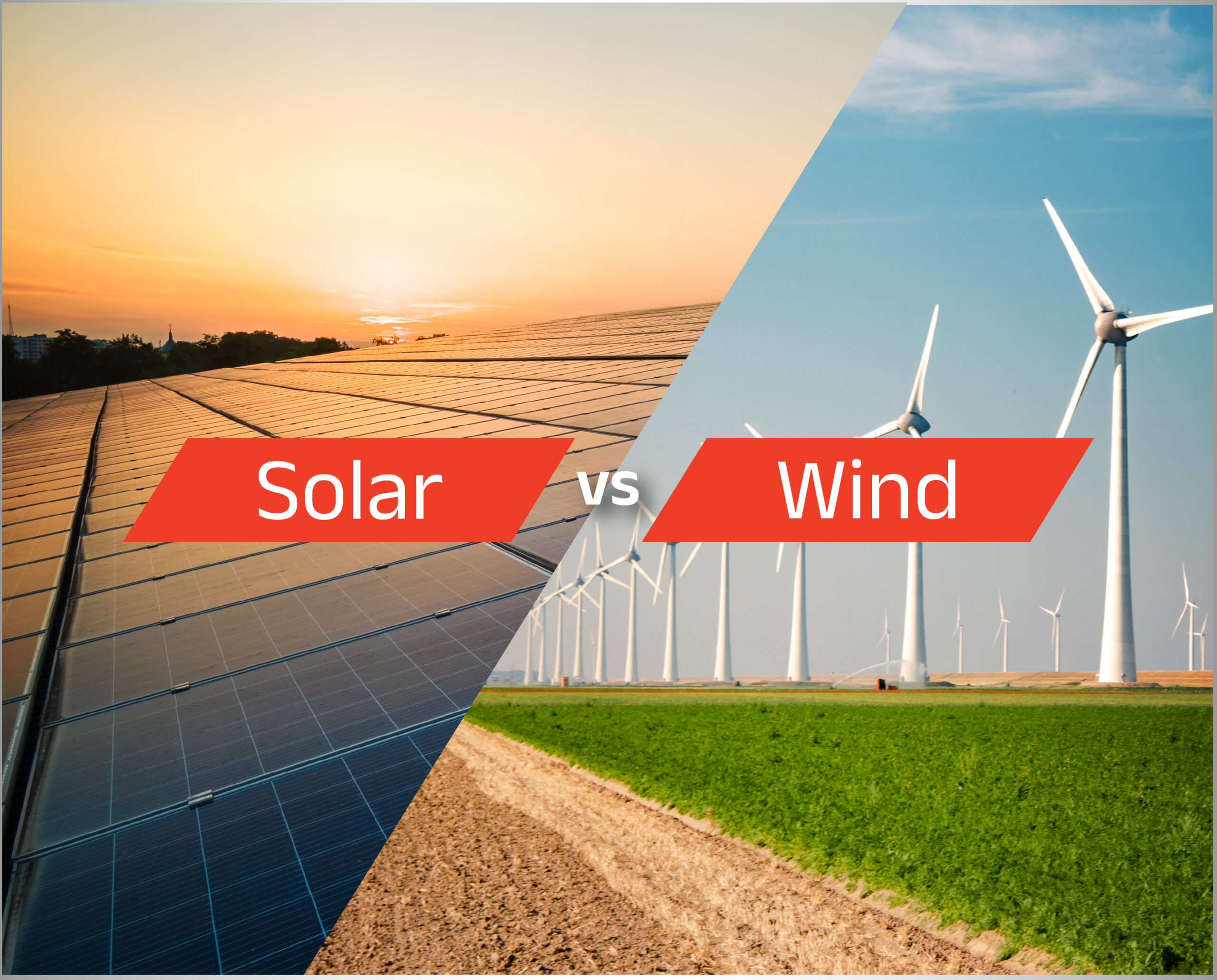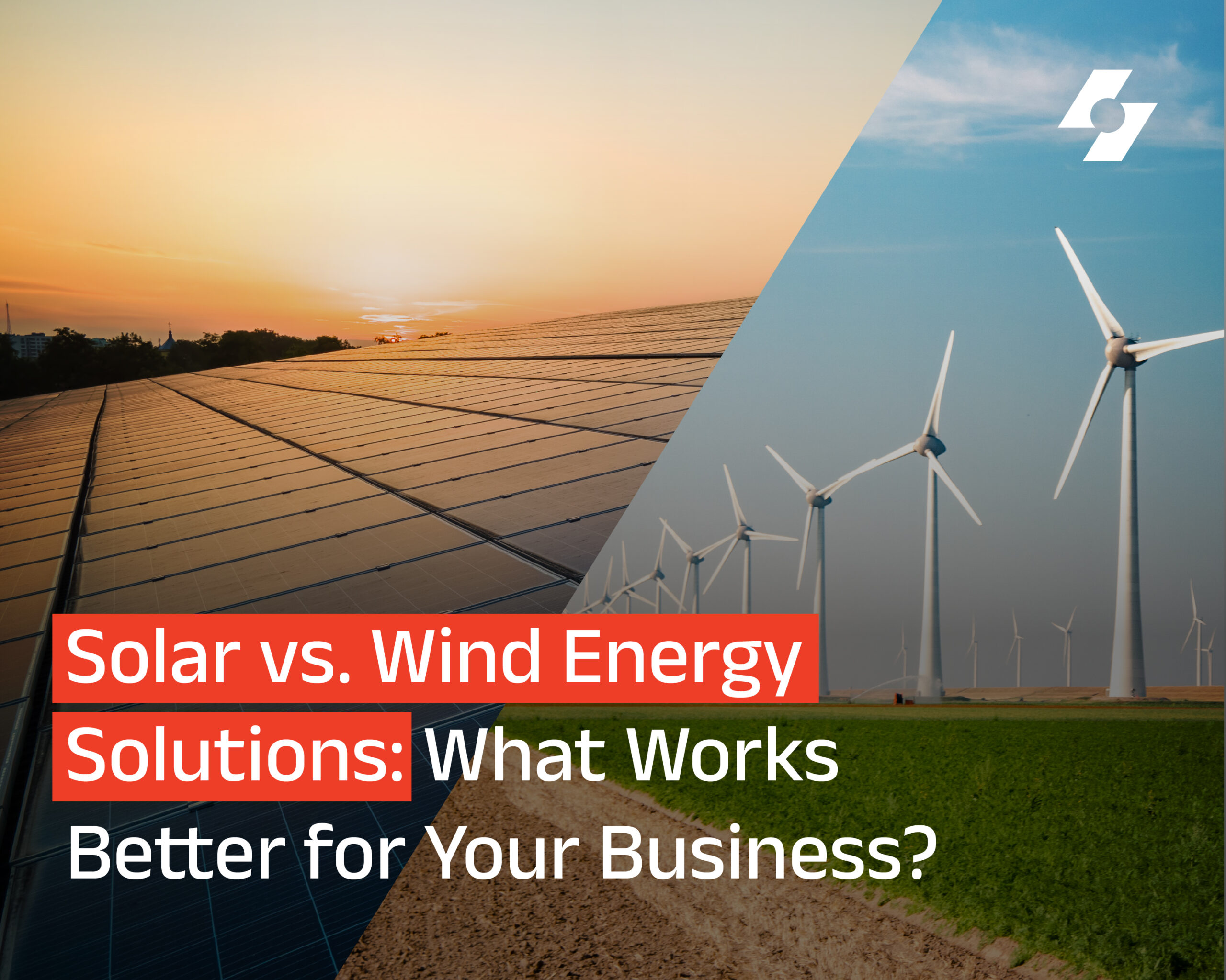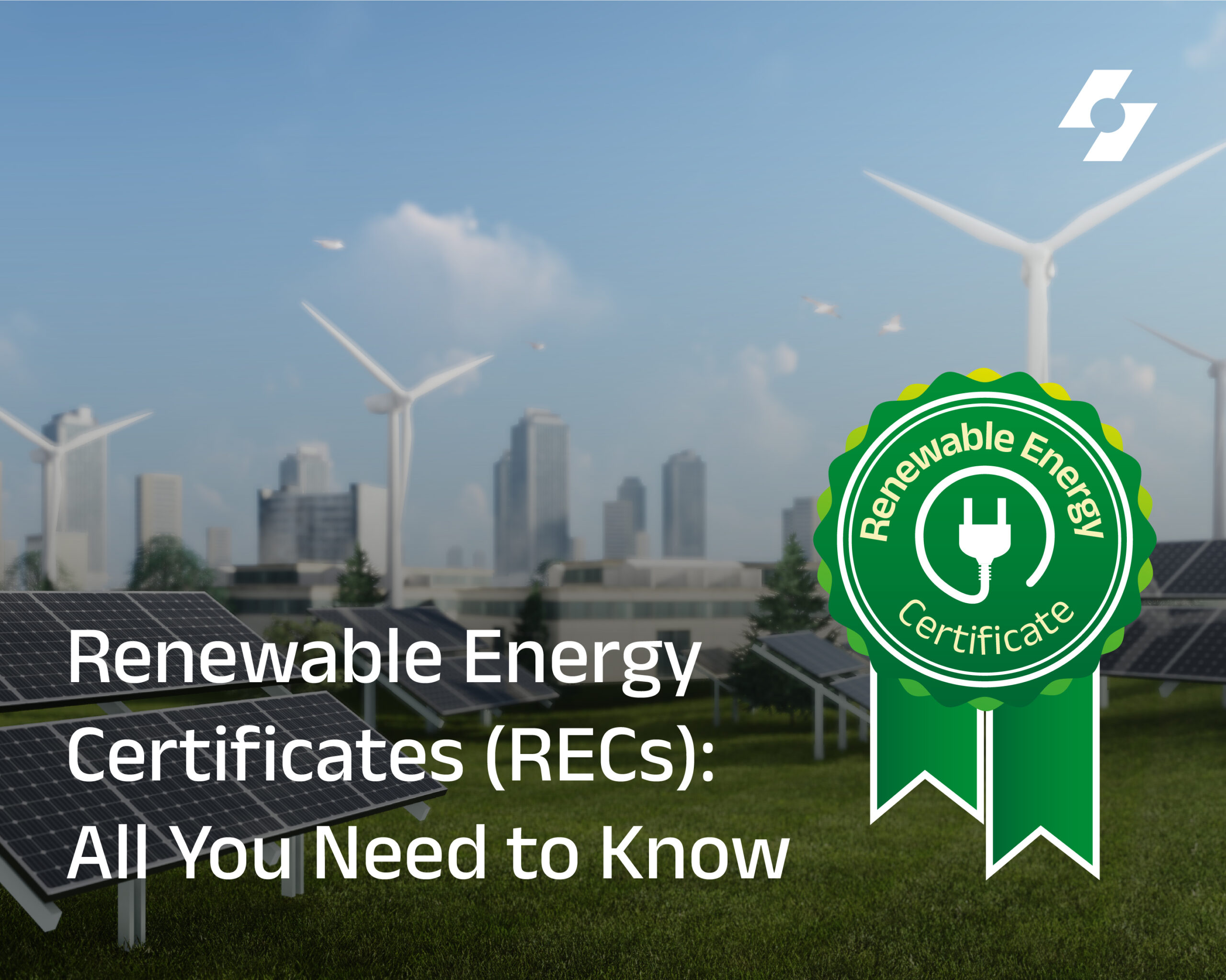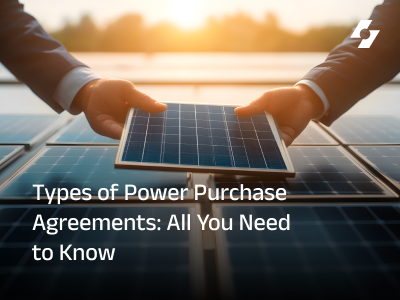In an era where energy costs are unpredictabe and ESG mandates are becoming non-negotiable, Indian enterprises are rethinking their power strategies. Solar and wind — once viewed as futuristic — are now boardroom decisions. But what’s the right mix for your business? In this blog, we decode solar vs wind energy, not just from a technical perspective, but as a strategic lever for sustainable business growth.
The country surpassed 200 GW in renewable energy capacity in 2024, with solar accounting for over 110 GW and wind for over 45 GW. While solar continues to dominate capacity additions, wind energy is seeing a resurgence in hybrid models. This reinforces the growing interest in both energy sources and raises questions like: what is the difference between solar and wind energy, and how do we choose?
However, the energy source you select is only half the equation. The business model you adopt — captive, group captive, or third-party power purchase agreements (PPAs) — can significantly impact cost, reliability, and scalability. The comparison between solar energy and wind energy becomes more complex once cost structures and operational efficiencies are factored in.
This blog focuses on uptime, CUF (capacity utilisation factor), wind power vs solar power cost, development timelines, and regulatory advantages. More importantly, it draws a strategic comparison of procurement models to help you make the most risk-mitigated and capital-efficient energy decision for your business.
Is Solar the Right Fit for Your Business Infrastructure?
Solar energy is modular, scalable, and increasingly affordable – making it the most widely adopted renewable energy source by commercial and industrial (C&I) consumers. Solarpower systems convert sunlight into electricity using photovoltaic (PV) cells. This electricity can be consumed onsite or fed back into the grid.
Strategic Business Advantages:
- Cost Efficiency: The levelized cost of electricity (LCOE) from solar is among the lowest in India. In 2024, open-access solar PPAs are priced between ₹2.30 to ₹4.00/kWh in most states.
- High Scalability: Solar can be deployed both on rooftops and as utility-scale ground-mounted systems.
- Fast Deployment: Solar assets typically achieve commissioning within 6–9 months, depending on the Independent Power Producer you’re working with.
- Minimal Maintenance: Fewer moving parts than wind turbines lead to lower O&M costs — one of the advantages of solar and wind energy, especially when evaluating lifecycle efficiency.
Ideal Use Cases:
- Manufacturing facilities with high daytime energy consumption.
- Plants with idle rooftop or land assets.
- States with high solar irradiation: Rajasthan, Gujarat, Maharashtra, Uttar Pradesh, Madhya Pradesh, Tamil Nadu.
Case in Point: Wonder Cement powers both its Uttar Pradesh and Maharashtra facilities via third-party solar open-access PPAs with Sunsure Energy, displacing over 65% of grid power at both sites. This is a prime example of how solar energy can be leveraged for cost-effective power procurement.
Subscribe to our newsletter
Is Wind Energy Viable for Your Business?
Wind energy offers excellent CUF and complements solar with high night-time generation. However, it’s more geography-dependent, with viable corridors largely concentrated in Tamil Nadu, Gujarat, Maharahtra, Karnataka, and Andhra Pradesh.
Strategic Business Advantages:
- Higher CUF: Wind farms typically deliver CUFs between 35%–45%, significantly higher than standalone solar (17%–23%).
- Night-Time Generation: Wind complements solar’s daytime generation, enabling more stable hybrid and RTC power.
- Long-Term Value: Wind tariffs under PPAs range between ₹3.0/kWh and ₹5/kWh (depending on the state) and are locked in for 15–25 years.
Wind energy often appeals to businesses seeking long-duration contracts and energy diversification.
Constraints:
- Location-Specific: Wind requires high wind zones, limiting site flexibility.
- Land Intensive: Requires large contiguous tracts of land (~1 acre/MW).
- Longer Execution Timeline: Typically 12–18 months.
Higher Upfront Investment: Setting up wind plants is costlier than solar — an important factor in wind power vs solar power cost analysis.
Solar vs. Wind: Strategic Comparison for Businesses
| Parameter |
Solar Energy |
Wind Energy |
| CUF |
17%–23% |
25%–35% |
| Tariff Range (Open Access) |
₹2.30–₹4.00/kWh |
₹3.00–₹5.00/kWh |
| Space Requirement (Small) |
~180 sq. ft. for a 3 kW rooftop system |
~1,600–2,000 sq. m for a 25 kW wind turbine |
| Space Requirement (Large) |
~3,900 sq. ft. (approx. 360 sq. m) for a 65 kW ground-mounted solar system |
~6,000–10,000 sq. m for a 90 kW wind turbine |
| Annual Output per kW |
1,000–2,000 kWh per kW installed (varies by solar irradiance) |
1,800–2,500 kWh per kW installed (in high wind zones with ≥6 m/s average speed) |
| Ideal Geographies |
High irradiance zones: Rajasthan, Gujarat, Maharashtra, Tamil Nadu |
High wind zones: Tamil Nadu, Gujarat, Karnataka, Maharashtra, coastal areas |
This strategic comparison between solar energy and wind energy can help businesses make the right energy investment – based on space, CUF, location, and time-to-power.
Procurement Models: Self-Owned vs Group Captive vs Third-Party PPAs
Choosing the right procurement model can be more decisive than choosing the energy source. Let’s look at the options:
Self-Owned Captive Plant:
- High upfront capex.
- Full control over assets.
- Longer payback periods (5–7 years).
- Complexity in land acquisition, permits, and O&M.
- Complexity in running the plant and maximising the output as compared to the experts or Independent Power Producers who can offer the right energy mix at affordable costs with much lesser risks.
Group Captive Model (Recommended):
- No upfront capex; only 26% equity participation required by the consumer.
- Long-term cost certainty through fixed-tariff PPAs with IPPs.
- Ideal for businesses that want control but prefer asset-light strategy.
Third-Party Open Access PPA:
- Asset owned by the power producer.
- No capex or equity required from consumers.
- Energy billed at agreed rate; flexible contract durations.
- Ideal for companies with limited appetite for energy project risk.
When evaluating these options, understanding the similarities between solar and wind energy — like their ability to decarbonise power supply and reduce long-term operational costs — can clarify the business case further.
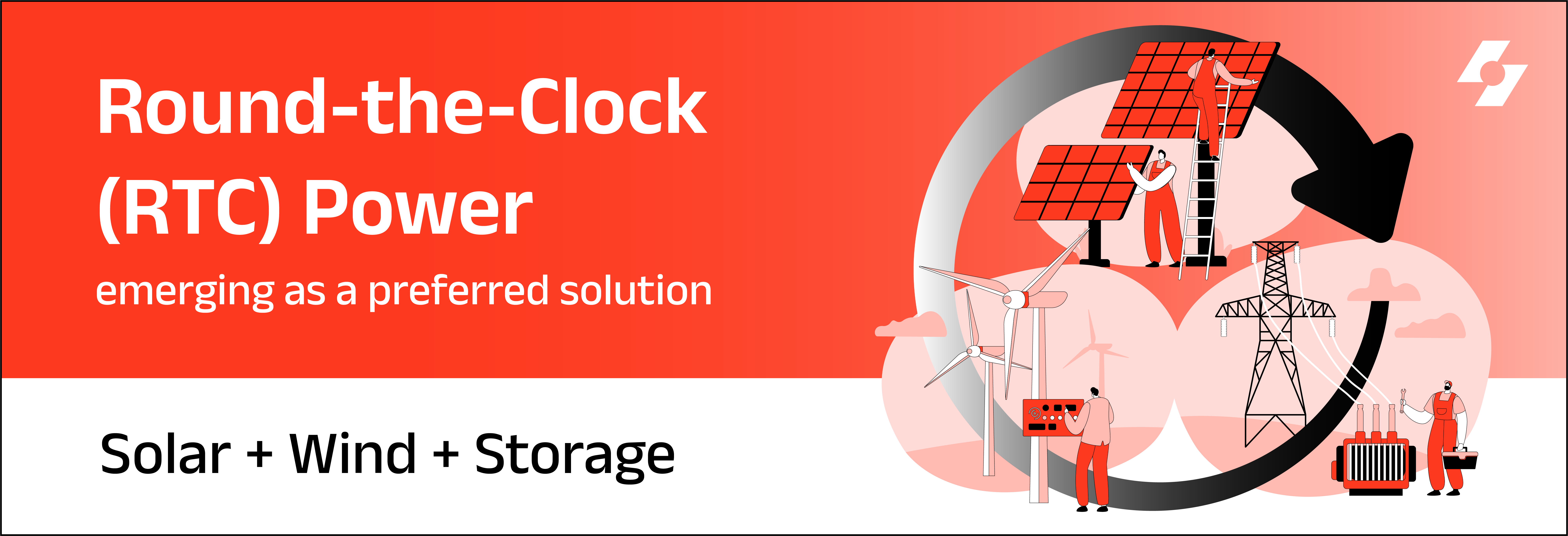
The Case for Hybrid and RTC Power
With energy demand growing and grid reliability challenges rising, Round-the-Clock (RTC) power via solar + wind + storage is emerging as a preferred solution.
- Hybrid CUF: Solar-wind hybrids can deliver CUFs of 40% or more.
- RTC Procurement: Advanced PPAs structured with RTC guarantees are now being signed by data centers, cement companies, and pharma majors.Read more about Hybrid Wind-Solar Energy
Example: Sify Technologies and Emcure Pharma are powering their high-reliability operations via Sunsure’s renewable energy solutions.
Final Take: Strategic Considerations for Power Procurement Decision Makers
When evaluating solar vs wind energy, leaders should consider:
- What is our load profile? (Day-heavy, 24×7 operations, seasonal variability?)
- Where are our plants located? (Do we operate in solar- or wind-rich states?)
- Do we have in-house capabilities or should we choose an expert for clean power requirements?
- What is our carbon reduction timeline? (Net-zero by 2030, 2040?)
- What is our risk appetite for energy assets and is there a way this could be reduced? (Hint: Captive & Group Captive Models)
With increasing clarity on the advantages of solar and wind energy, procurement teams can now create informed, future-ready energy strategies.
About Sunsure Energy
Founded in 2014, Sunsure Energy is the preferred renewable energy solutions provider for India’s leading businesses transitioning to green power. As an Independent Power Producer (IPP), Sunsure enables corporations across India to embrace clean energy through long-term round-the-clock (RTC) Power Purchase Agreements (PPAs) that offset up to 70% of power use to renewable energy through a mix of solar, wind and battery storage technologies while reducing costs by up to 50% compared to conventional sources.
To ensure smooth transition to green power, Sunsure specializes in off-site captive and third party PPAs using solar, wind and hybrid sources of power, via both Intra-State and Inter-State connectivities. With power trading and green attributes capabilities, the company enables 100% transition to green energy for the customer. Backed by Partners Group AG with a $400 million equity investment, Sunsure is one of India’s fastest-growing companies, on track to become the biggest renewable energy company of the country. The company operates 500 MW of renewable assets, has 7.6 GW under development, and is scaling up to achieve 10 GW of operational capacity by 2030.
